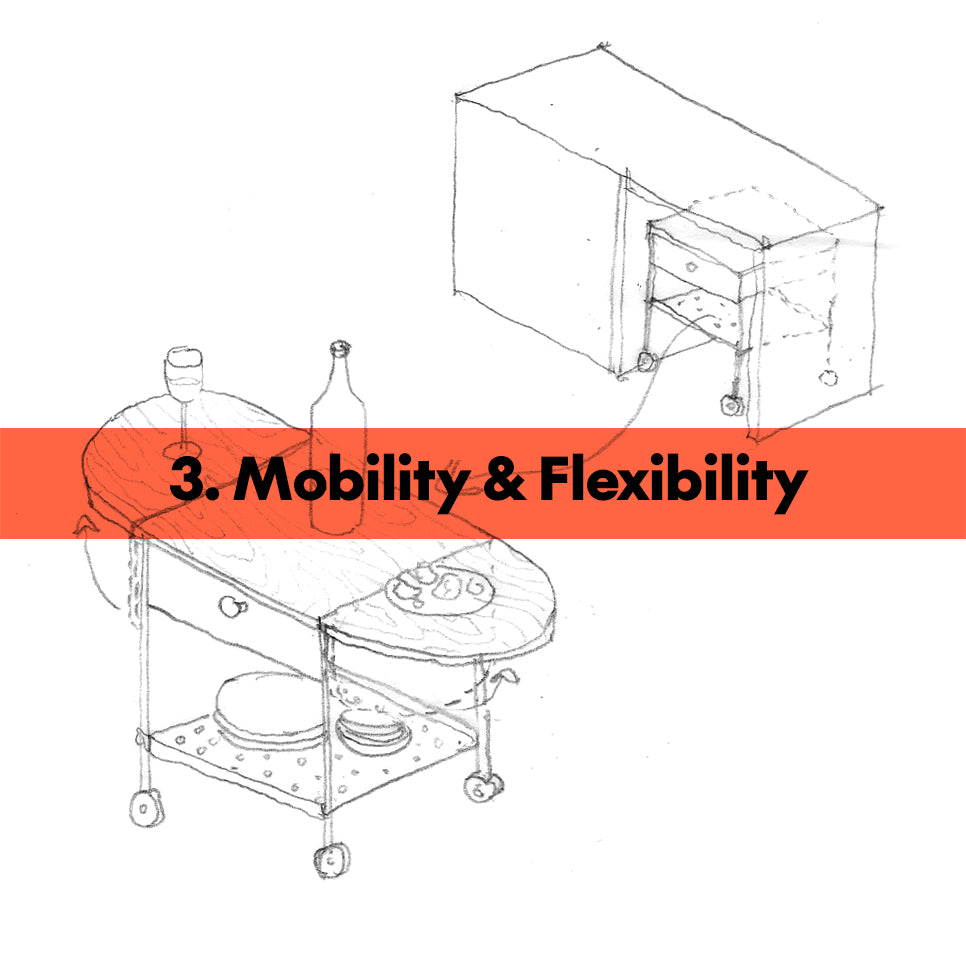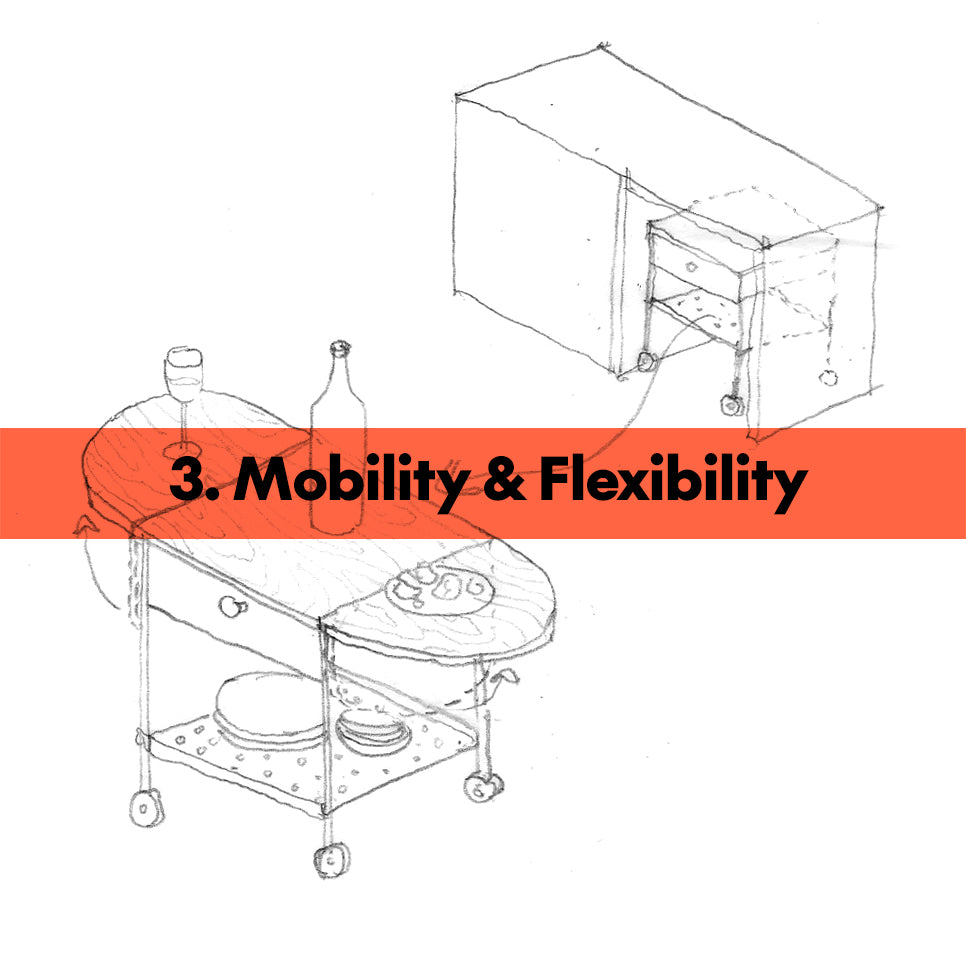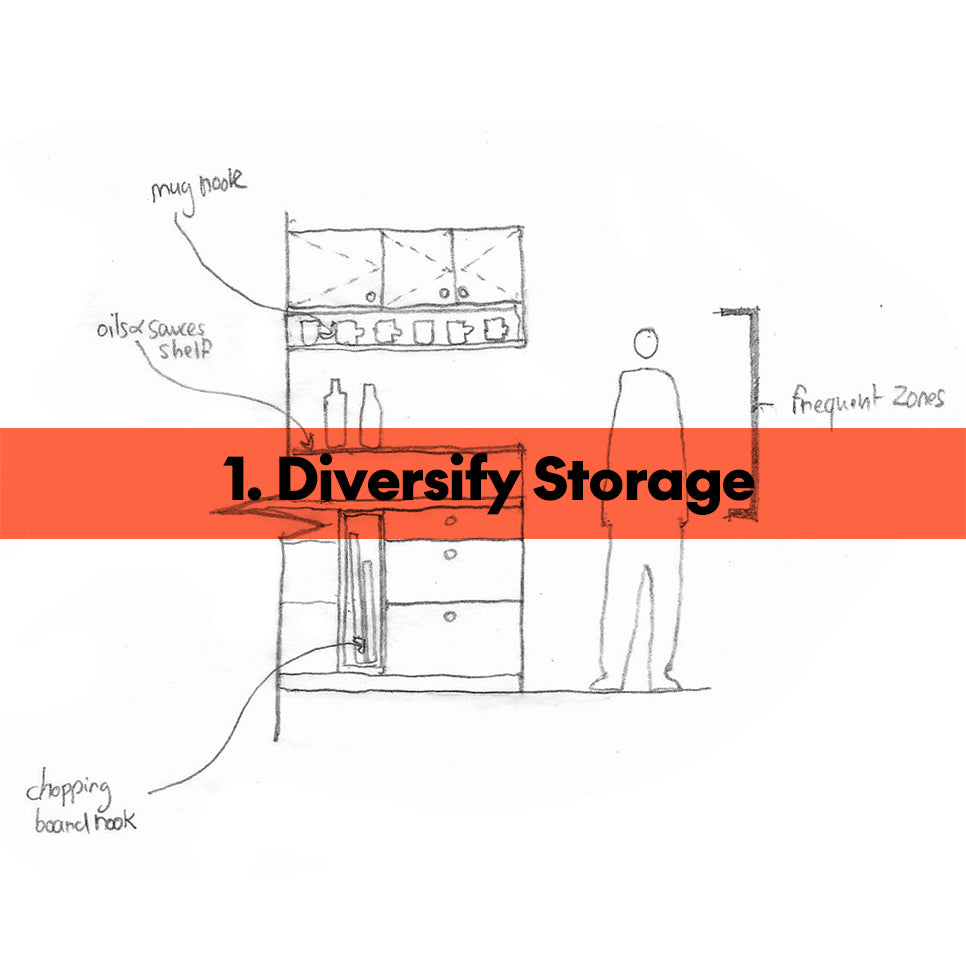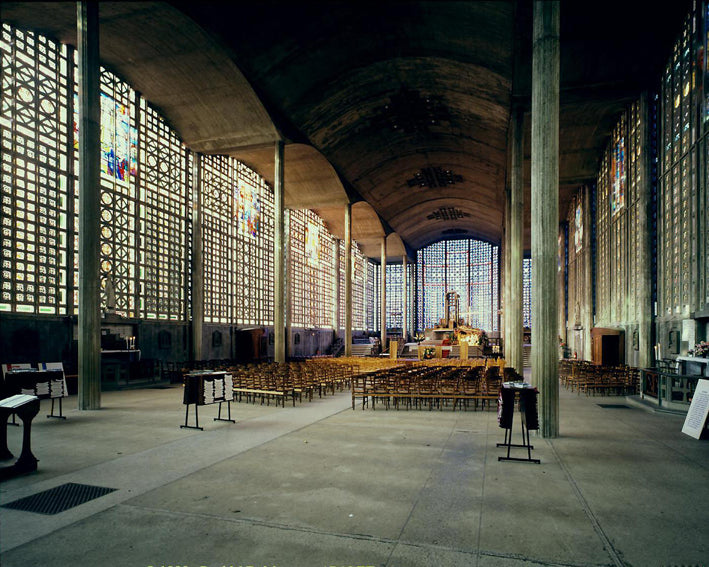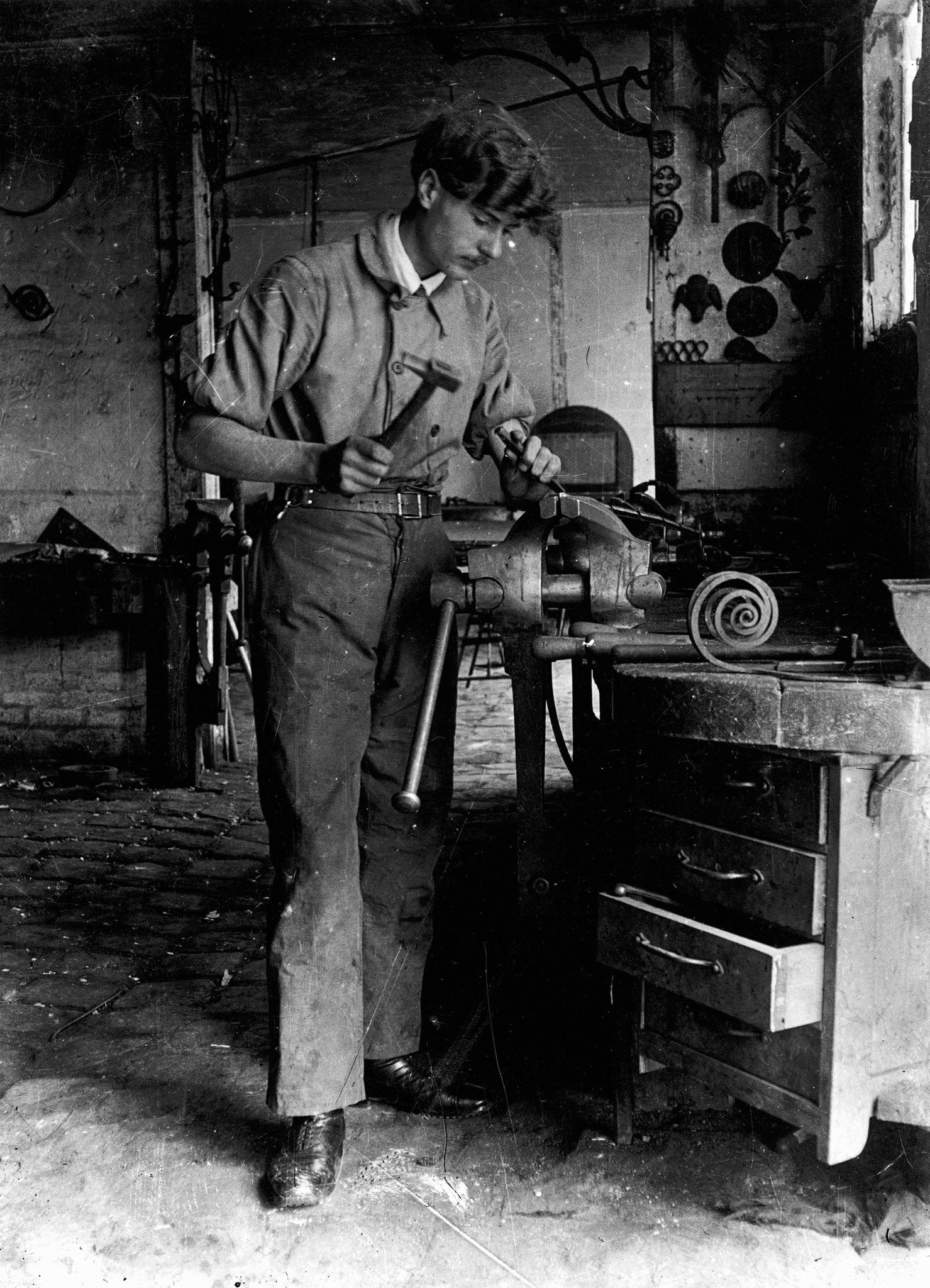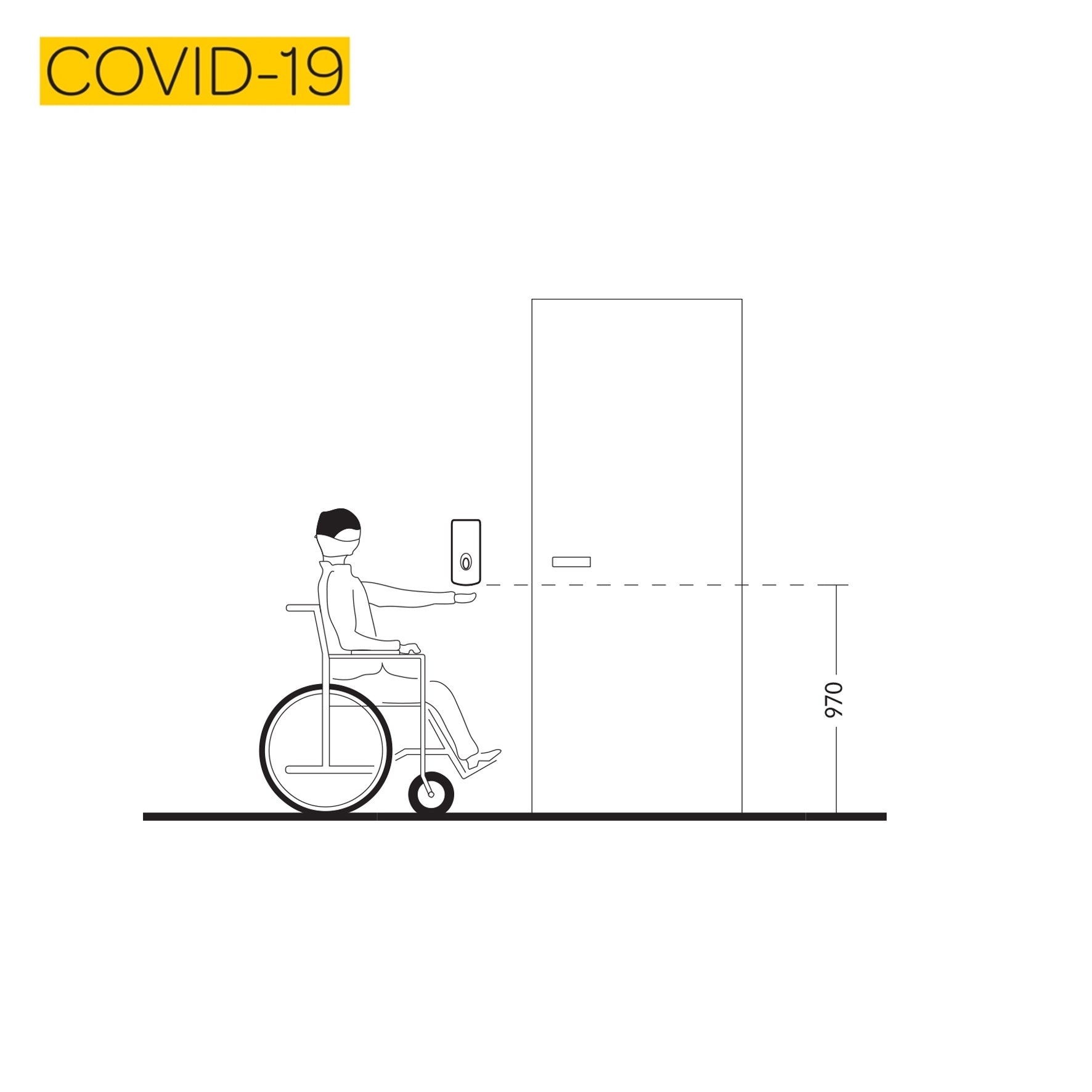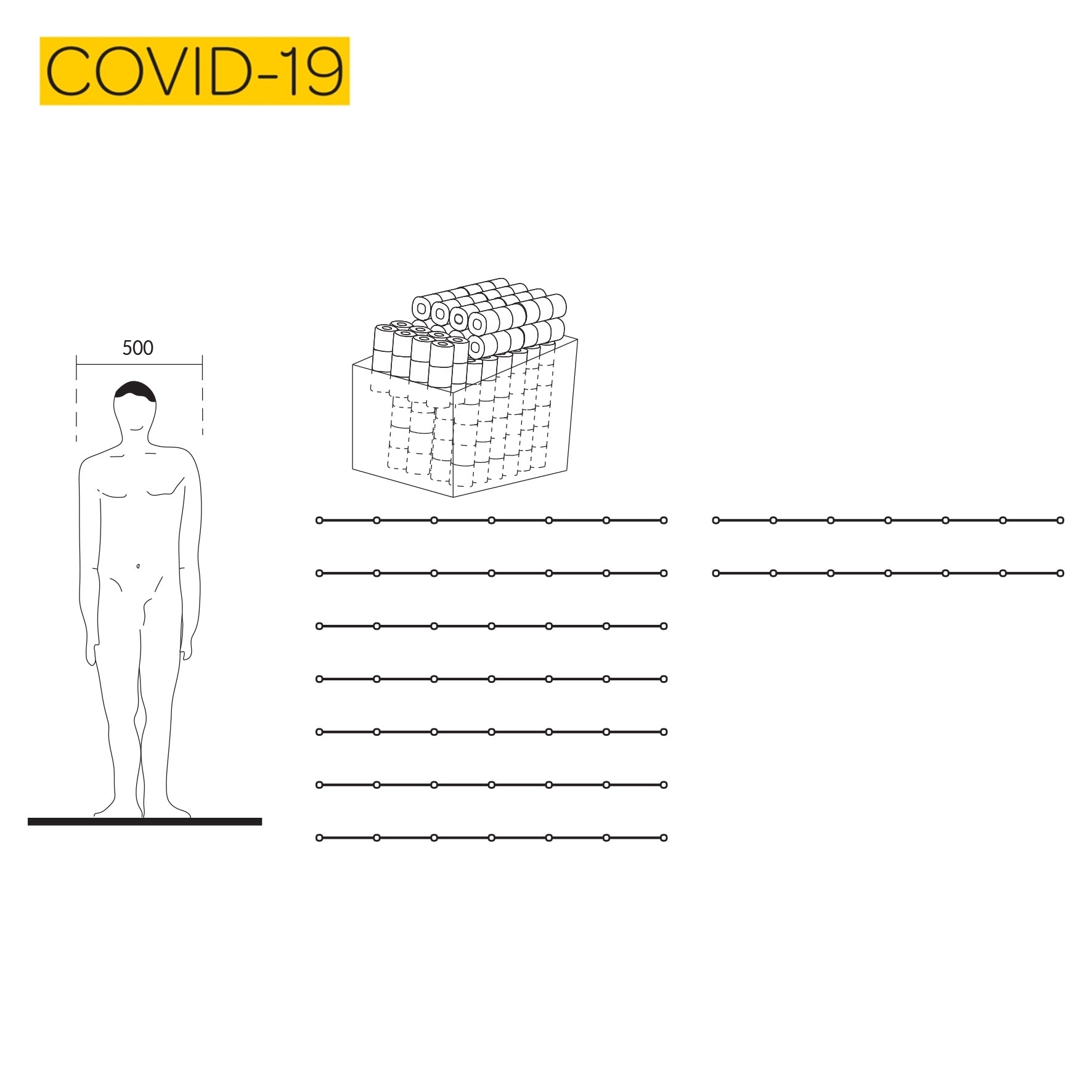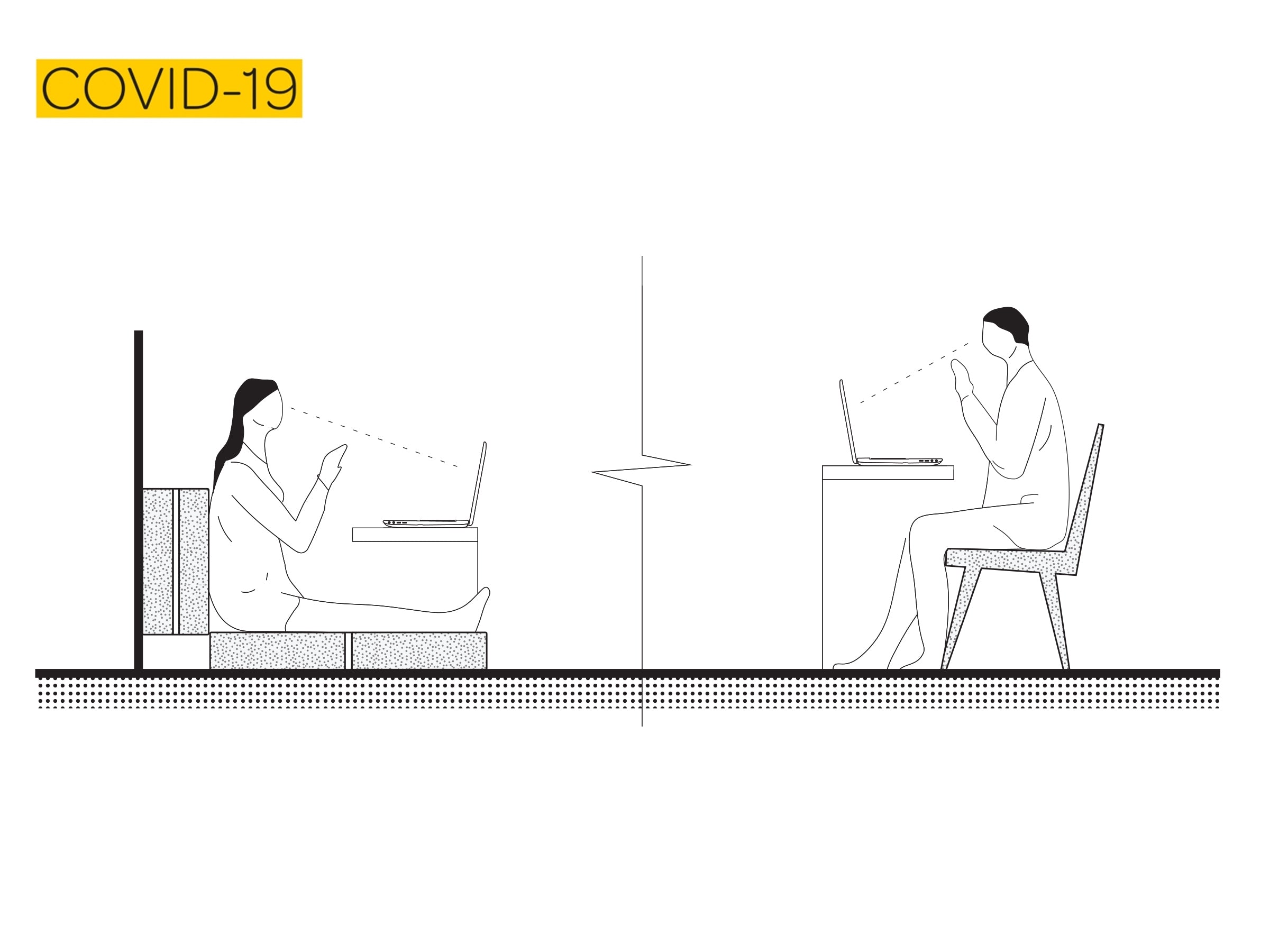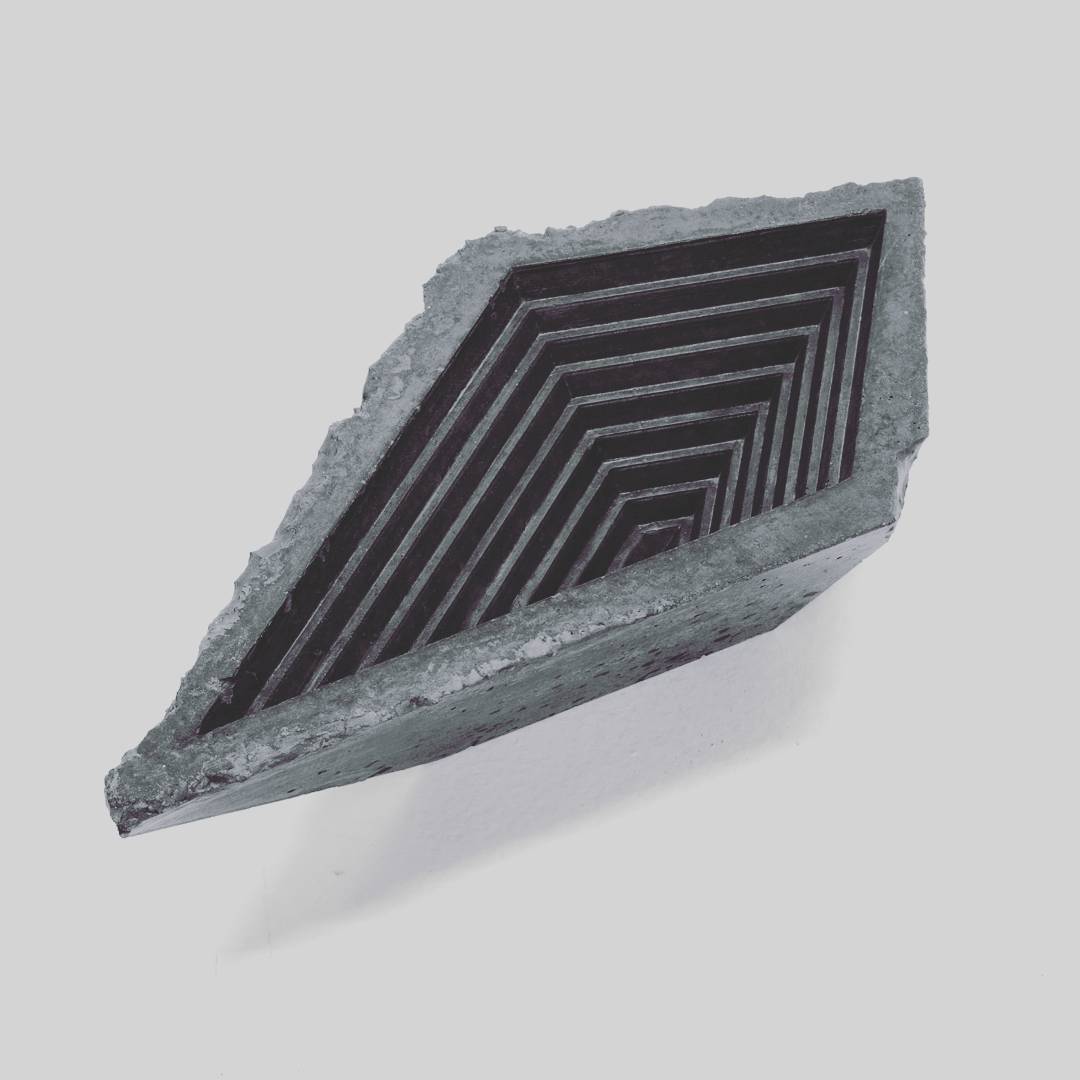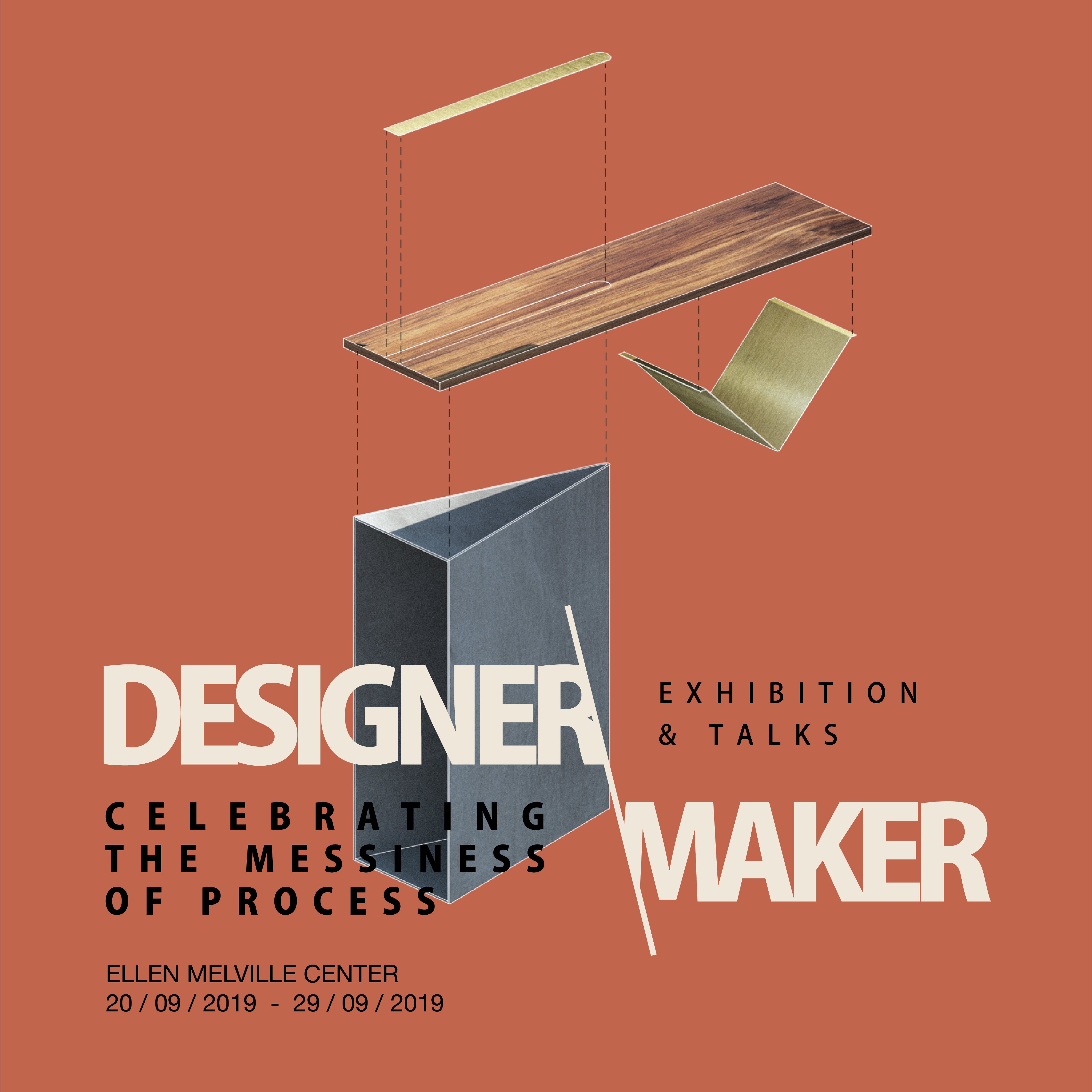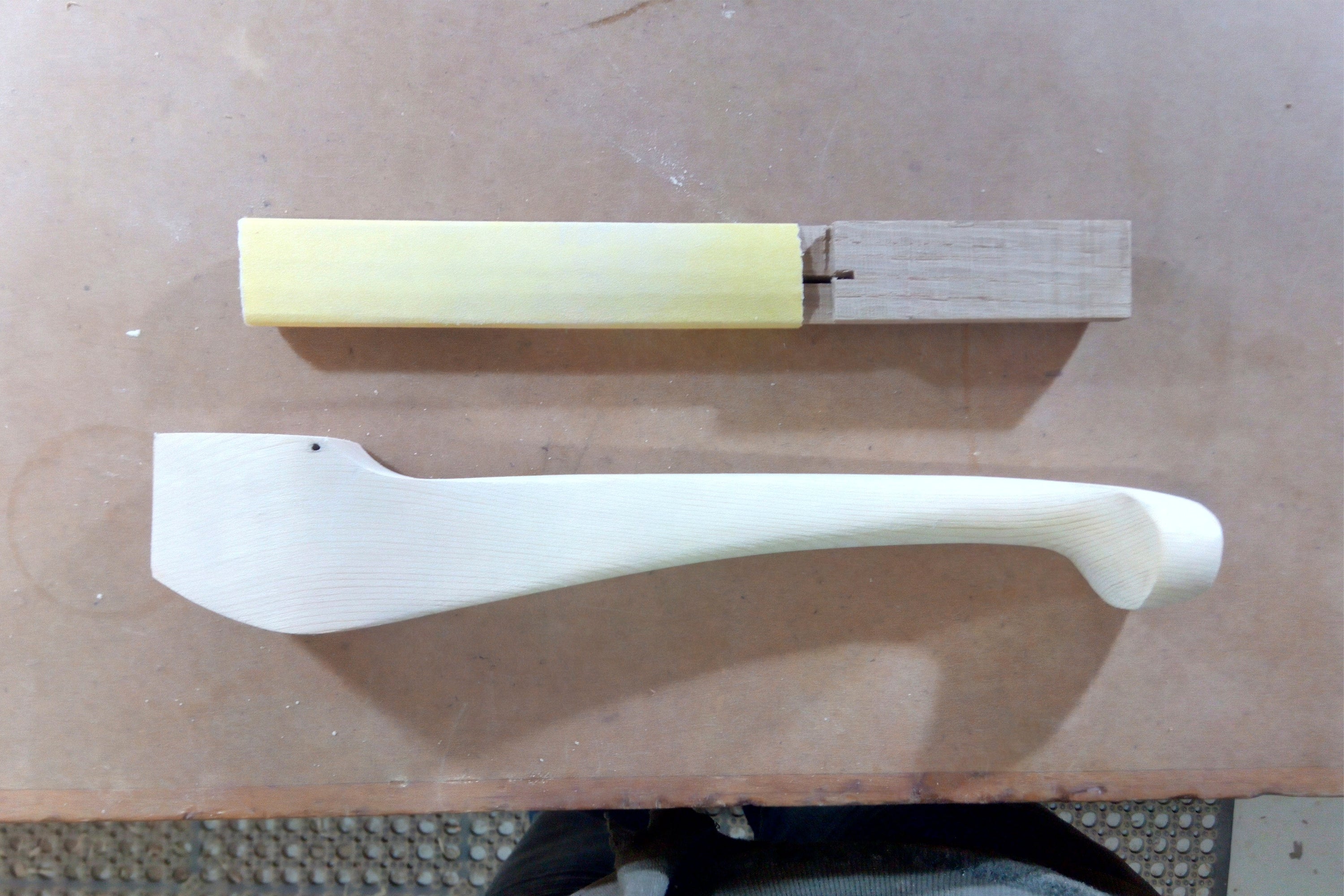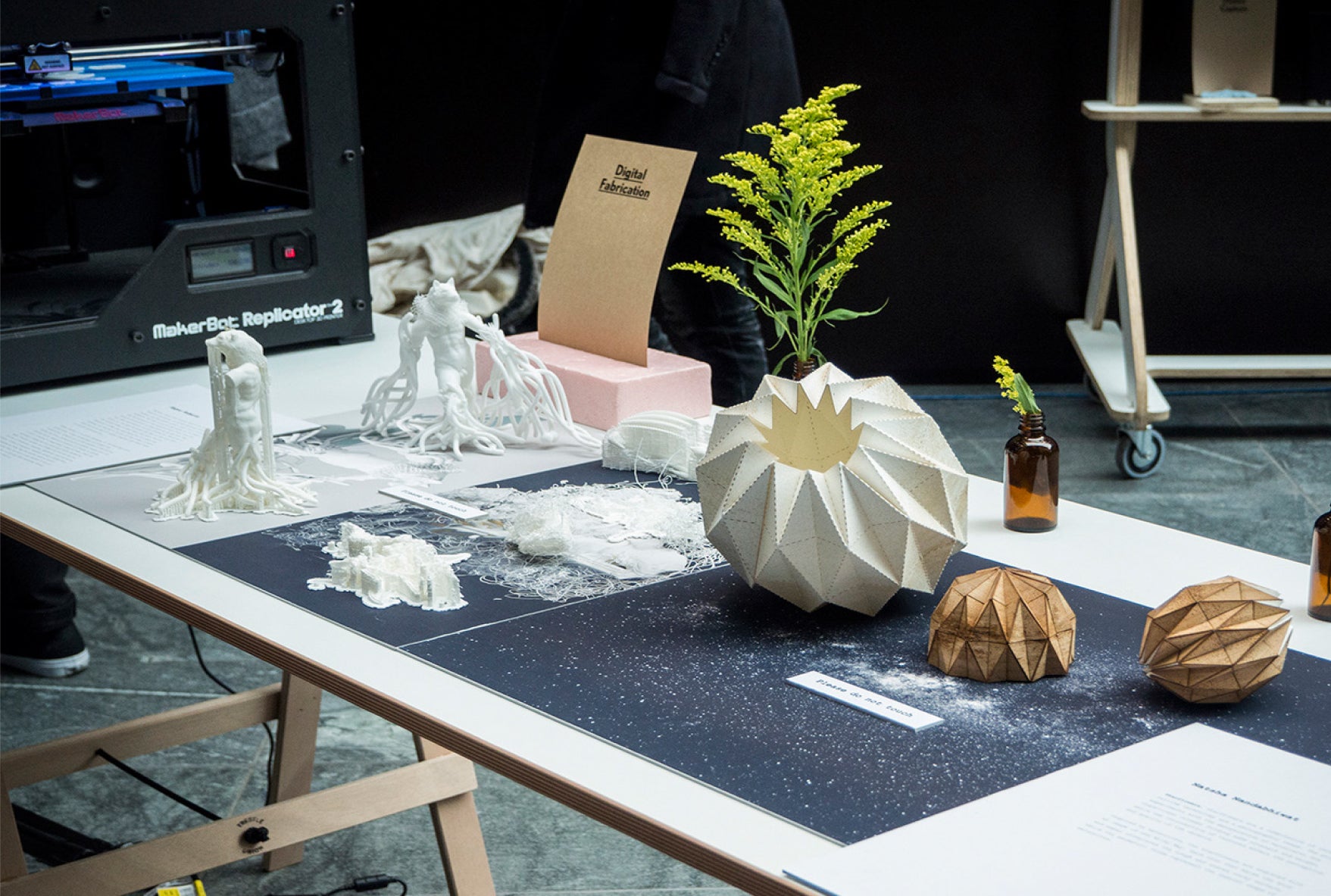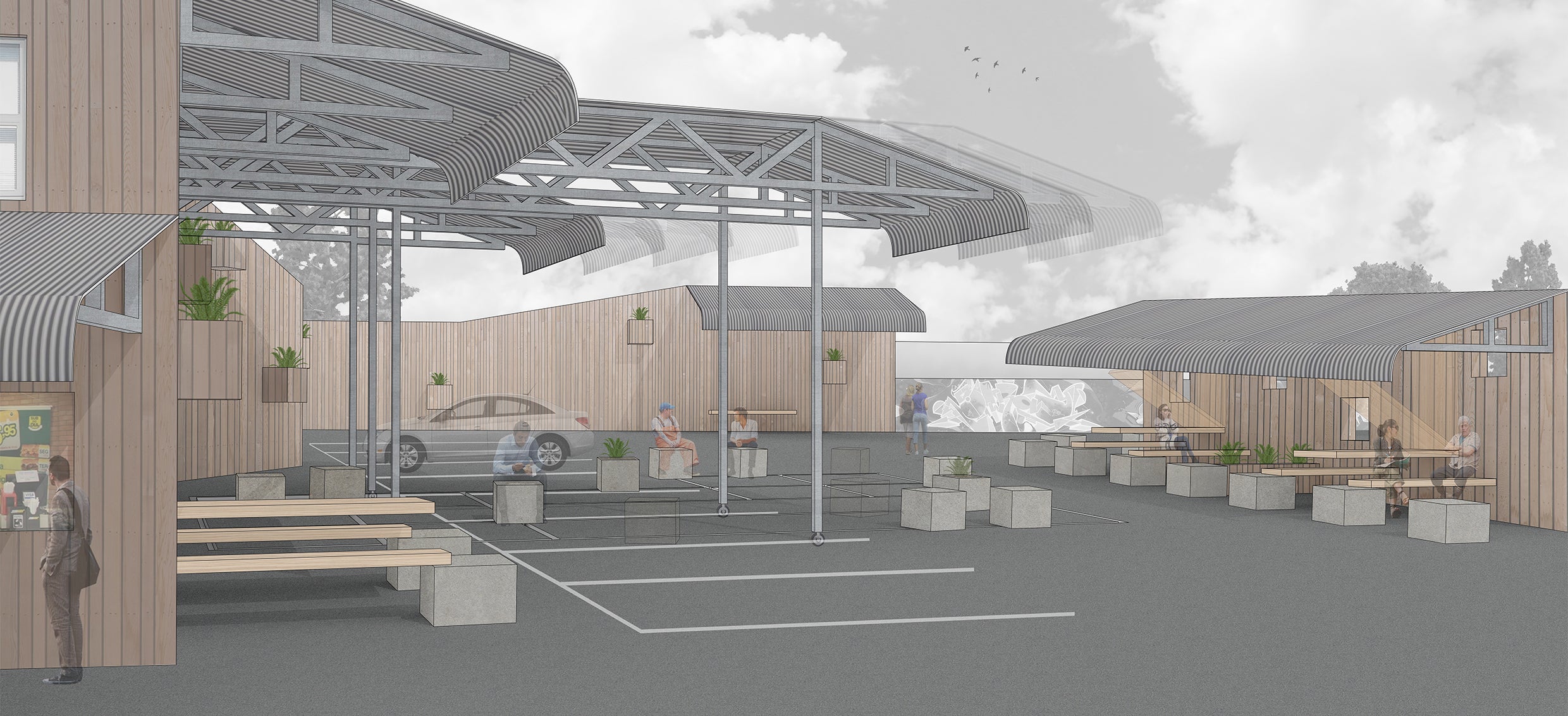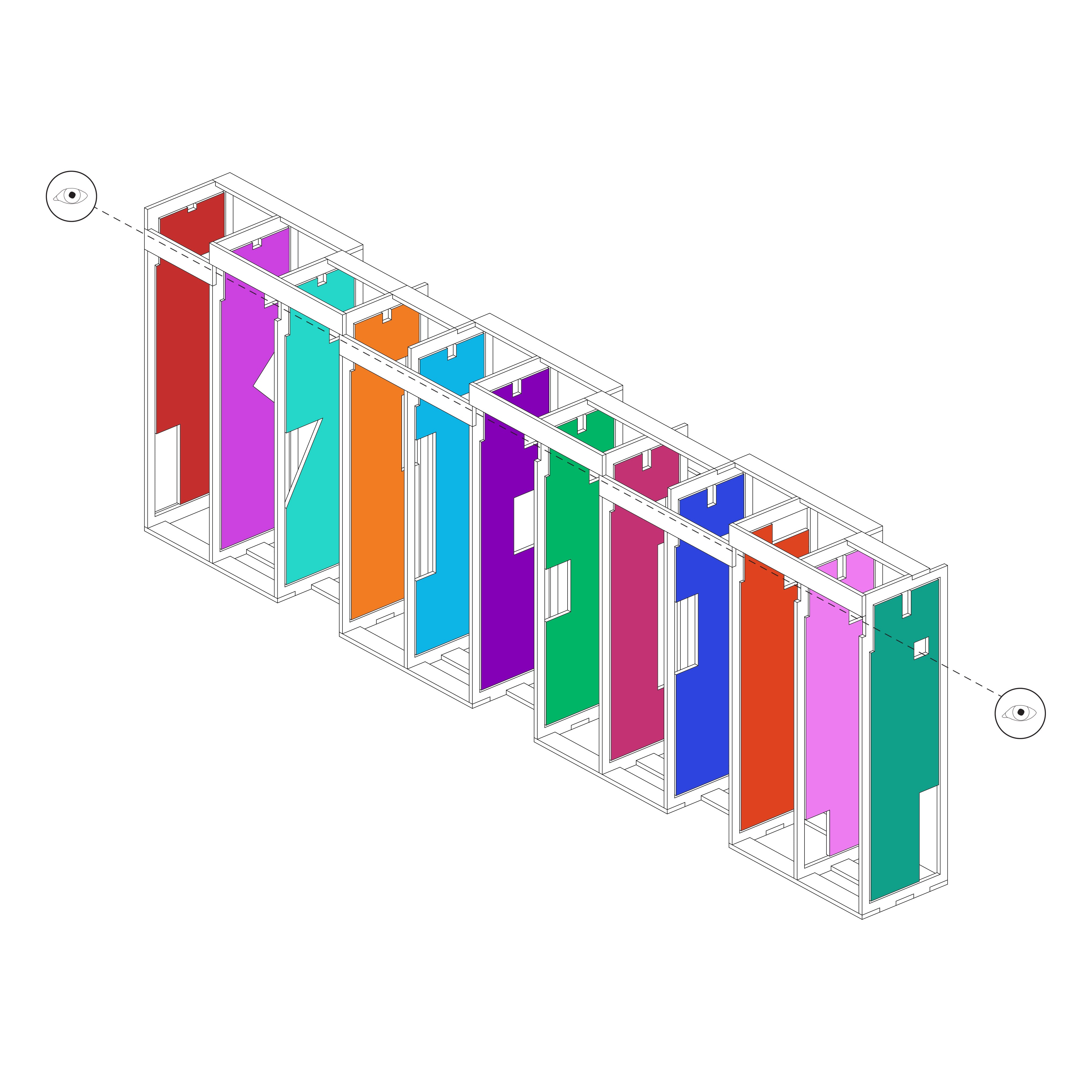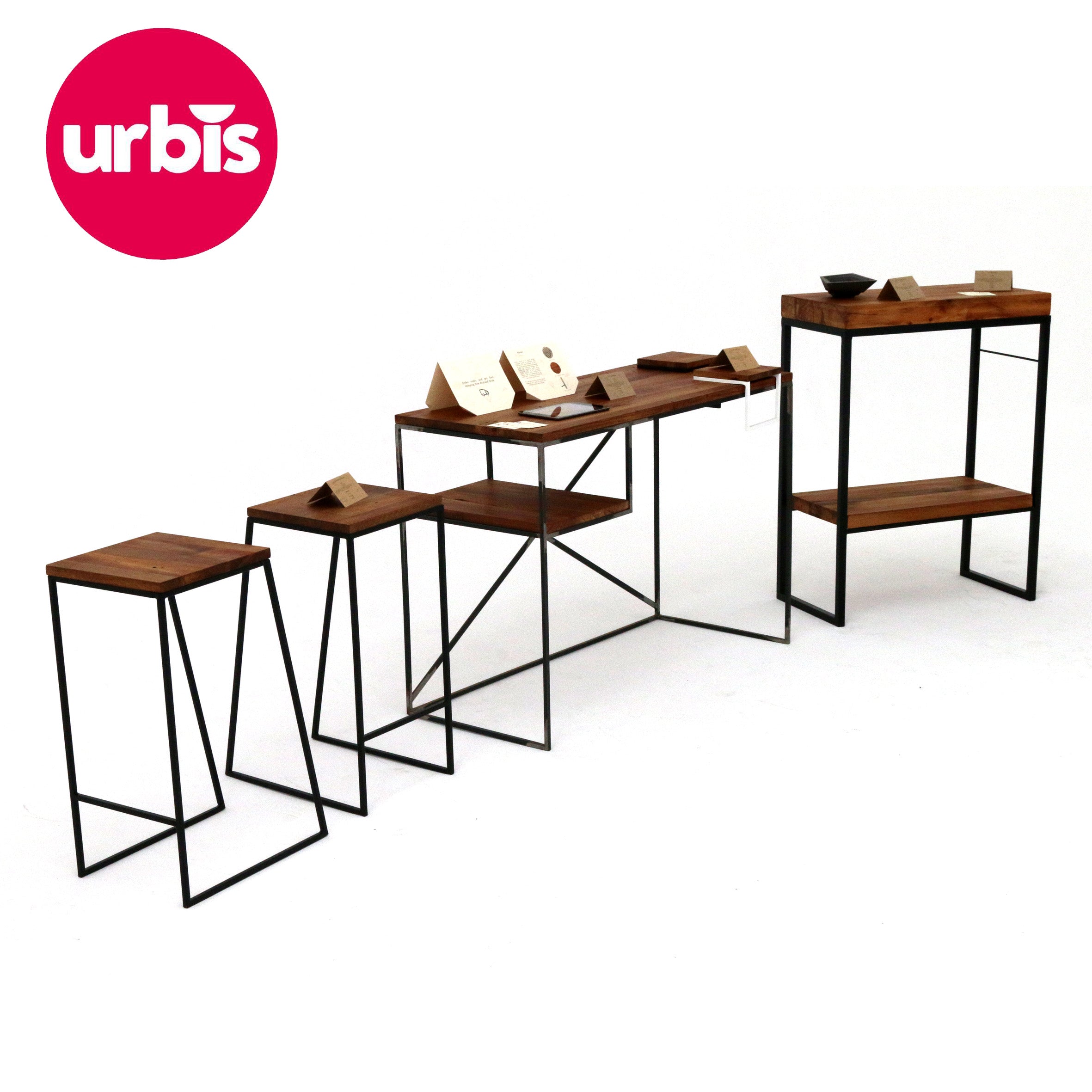3
It can be frustrating when a space doesn’t meet the needs of its users. Whether it's a kitchen that feels like a chore to cook in and becomes too cramped when guests are present, a living room overwhelmed by clutter due to limited storage, or an office that feels uninspiring—these issues often result in disconnection and a lack of motivation to engage with those spaces.
When a space isn’t well planned or lacks intention, it’s easy to lose things or feel scattered. This can be draining and make daily life more challenging than it should be.
This three-part series explores subtle but effective ways to reimagine space through small, intentional shifts. These small shifts can help shape spaces that are not only more practical but also more pleasurable to live in.
3 3. Mobility & Flexibility
Flexible furniture elements can dramatically transform the way a space is used, especially when square footage is limited or a room serves multiple purposes throughout the day. Pieces that can be reconfigured, folded away, or moved with ease help create a dynamic environment that adapts to shifting needs.
Drop-leaf tables, for instance, provide extra work or dining surface when extended but can be folded down to save space when not in use. Nesting stools or stackable chairs can be brought out for guests and neatly stored afterwards. Mobile trolleys serve as adaptable storage or serving surfaces and, when designed with a dedicated recess or cavity—such as beneath a bench or inside a pantry—they can be tucked away to maintain a sense of order.

Even simple adjustments can introduce a surprising degree of flexibility. Attaching castor wheels to low shelving units, side tables, or storage boxes allows furniture to move easily between tasks or zones to support a more spontaneous and fluid use of space. Round tables are especially useful in this context; placed near a wall during everyday use, they can be pulled into the centre when hosting - a simple strategy for smaller homes where fixed layouts can feel restrictive.

This principle in particular informed the mobile units designed for Visy Recycling’s education room, where the educator can pull them out and arrange them to suit different audiences and activities.

